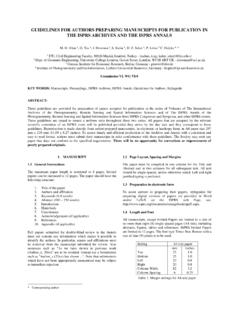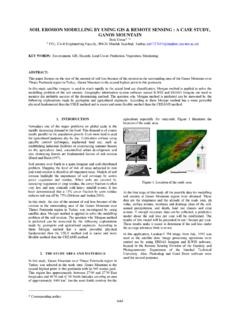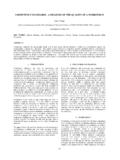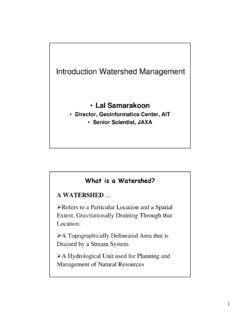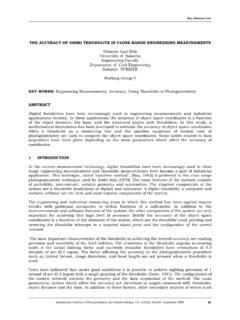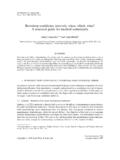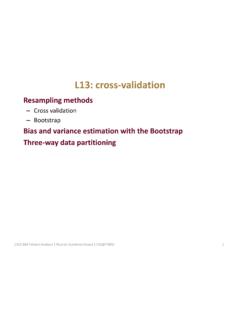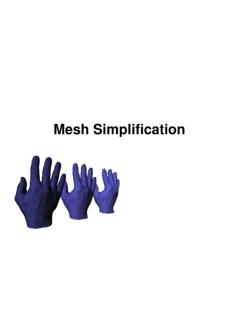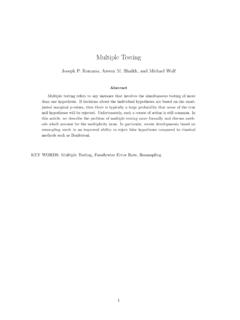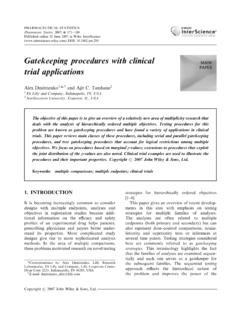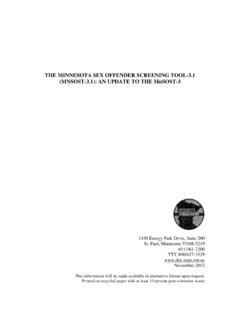Transcription of 2. Differences between maps and images.
1 MATCHING AND MAPPING OF REMOTE SENSING IMAGES: Aspects of Methodology and Quality. Buiten Agricultural University Wageningen, Department of Surveying, Photogrammetry and Remote Sensing Box 339. 6700 AH Wageningen, The Netherlands Commission Number: III. Abstract. The increasing importance of the integration of Remote Sensing data (RS) and Geographical Information Systems (GIS) has an increasing impact on the necessity of a proper methodology and quality analysis of image registration. After a brief review of methods of image to image or image to map registration by using mapping polynomials and control points, the paper emphasizes a judicious analysls 0f the quality parameters, both ,precision and relia- bility.
2 Besides description of two testing variates the attention is especially focussed on the boundary value of each control point concerning the size and probability of remaining, undiscovered errors in the pointing of control points in image or map. An analysis of sources of pointing deviations is given in view of an a priori variance to be used in the testing procedure. 1. Introduction. Recently there is an increasing need of remote sensing (RS-) image products which are geo- metrically corrected, so that its information content can be combined with the information stored in existing thematic maps at several scales and of diverging sources.
3 One of the most important reasons for this need of matching and mapping of RS-images is the increasing market flow of images of different sensor type, acquired at different time and at different height. By this the user of RS-images has to deal with the integration of latent information of a heterogeneous set of image data, together with other types of information and (fore-) knowledge. So there are two main aspects in the matching of data: a. The combination of RS-images, being of the multispectral- or multivariable-, multisensor-, multistage-, multitemporal RS types, being especially important for the analysis of processes or change detection of objects on the earth surface.
4 B. The comparison of RS-images to existing data like topographic and thematic maps either in analogue form or digitally stored in geographical information systems (GIS), being especially important for the information flow in several disciplines an~ fields of application concerning land evaluation, land use, soil hydrology and vegetation monito- ring (see B ,urrough, 1986). Central issue in these image -to- image and image - to map-relations is the radiometric resp. thematic object data bound to a geographic location. So matching " image " and "map" by a geometric registration (geometric rearrangement of pixels or rastercells) and a resampling (attachment of derived pixel values to the new raster elements) is the cement of thematic information sources.
5 So it is self-evident that a suitable and justified quality (both precision and reliability) of the geometric registration is of an eminent importance. III 1. 2. Differences between maps and images. There are typical Differences between maps and images, originating from the distinctions about the aim of data gathering, the acquisition technique, the data processing and the information representation to the user. Because of most thematic data gathering is related to existing topographic maps, in table 1 the properties of topographic map will be compared to those of a remote sensing image in general.
6 Table 1: TOPOGRAPHIC MAP REMOTE SENSING image . - geometrical oriented - radiometrical oriented - emphasis on geometric boundaries of - emphasis on thematic aspect of area-elements geographical units (concerning the object (boundaries only deductable by segmentation types points, lines and areas) or edge enhancement techniques). - map of vector elements - matrix of raster elements (after idealisation, topographical. inter- (except aerial photographs which are to be pretation and generalisation) digitized first). - map figuration with legend, having dis- - image with a sliding (continuous) represen- tinct thematic assignment tation of radiometric variables (except when classification took place).
7 These Differences continuously keeping in mind is essential for an accurate selection of control points at the geometric registration stage, for a proper judgement of radiometric and thematic values at the resampling stage, and for the quality analysis of the informa- tion layers after matching. In the next sections the resampling stage will be let out of consideration and emphasis is laid on the quality aspects of registration. 3. Methods for image registration using control points. There are two streams of image to map registration procedures to be distinguished, the one being the parametric way (using all required flight parameters of the remote sensing plat- form in a mathematical 3D - restitution model), the other being the non-parametric way (using a set of control points for the geometric registration of 2D - data layers).
8 In the latter case height information may be brought into account as a relief displacement correc- tion for pixel positions. This paper will be restricted to the non-parametric way, which is applicable alike to image - to- image registration. So it is more convenient to speak of the matching (geometric regis- tration) of MASTER (X,Y) and SLAVE (x,y), being two coordinate systems (rasters) with res- pect to image (i) and map (m) in one of the four possible combinations at will of the user (i-i; i-m; m-i; m-m respectively). In the current RS- image processing systems on the market, control points are acquired by manually and directly pointing on the screen display.
9 This paper deals with this method and discusses the factors determining the accuracy and limi- tations of it (section 4) in view of the Differences between map and image as discussed in section 2. Besides there are indirect methods of control point acquisition in development nowadays based on correlation algorithms or least squares techniques of pairs of candidate image windows. This will not be considered here; this paper pays attention to the background philosophy of pointing factors in general. Two main methods of non-parametric registration may be mentioned in short, the one being the method of trend modelling underlying the geometric fitting of the coordinate systems of master and slave; the other being the method of facet modelling.
10 Section 5 deals with the trend model approach using a polynomial transformation and assuming that the residuals III. after a least squares trendmodel fitting may be considered to be stochastic (noise compo- nents) within the matching area as a whole, as in general is the case in satellite RS. Besenicar and Kengen, 1988, describe the facetmodel, to be used when image distortions are caused by locally fluctuating platform parameters, as in general is the case in aerial RS. In that situation a subdivision of the matching area in triangle-facets formed out of a well- chosen set of control points may solve the registration problem.
